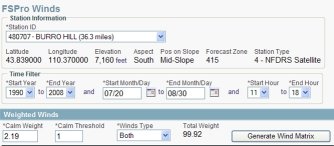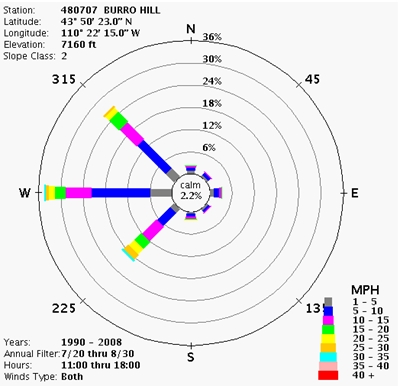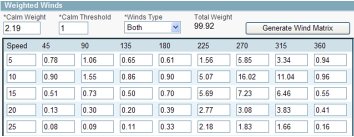FSPro uses historic wind (hourly observations)
When the fire behavior specialist (FBS) sets up an FSPro analyses, they select a RAWS available within WFDSS that has hourly winds representative of the area. For instance, if the fire is mostly along a ridgetop, it may not be prudent to choose a RAWS that is situated in a valley bottom.
Once the RAWS is selected, the station information appears. Time filter values are displayed, though the FBS should modify them to reflect the appropriate years, date, time, as well as wind type (10-minute average, wind gusts, or a combination of both). The image below shows a RAWS where the FBS has changed the time filter values.

Example of FSPro Winds Page with Station Info, Time Filter and Wind Type
A windrose (see image below) can be generated to help select the RAWS and determine the time filter values. If the FBS is not familiar with the winds in the fire area, it would be prudent to consult local subject matter experts when choosing the station and the filter settings.

Example of Windrose Generated from FSPro Wind Distribution
After selecting the RAWS determining the settings, FSPro generates a wind matrix (shown below). The values in this wind distribution matrix are grouped into categories by wind speed and cardinal directions. This format can be thought of as a tabular windrose; FSPro uses it for wind information to run the model.

Example of FSPro Generated Wind Matrix
In This Section |
See Also |
Reference |